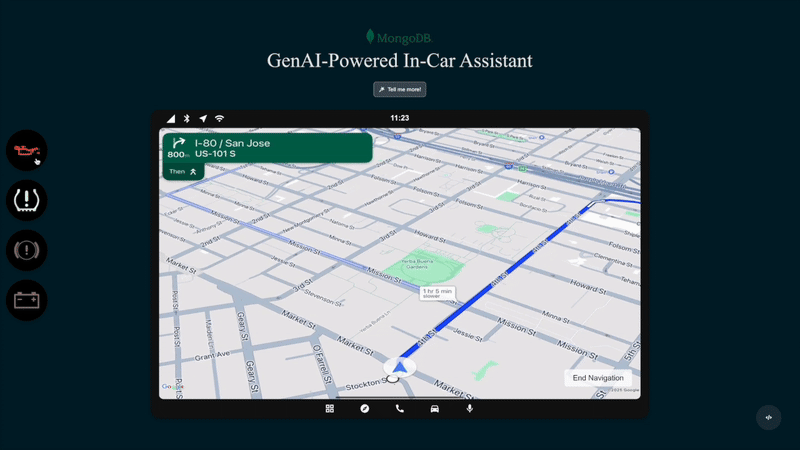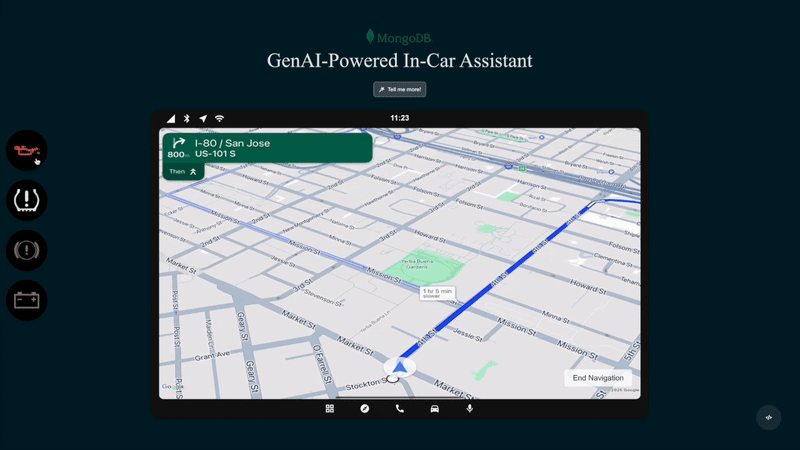The automotive industry is evolving fast: electrification, the rise of autonomous driving, and advanced safety systems are reshaping vehicles from the inside out. But innovation isn’t just happening to the drivetrain. Drivers (and passengers) now expect more intelligent, intuitive, and personalized experiences whenever they get into a car.
That’s where things get tricky. While modern cars are packed with features, many of them are complex to use. Voice assistants were supposed to simplify things, but most still only handle basic tasks, like setting navigation or changing music. As consumers’ expectations of technology grow, so does pressure on automakers. Standing out in a competitive market, accelerating time to market, and managing rising development costs—all while delivering seamless digital experiences—is no small task.
The good news? Drivers are ready for something better. According to a SoundHoundAI study, 79% of drivers in Europe would use voice assistants powered by generative AI. And 83% of those planning to buy a car in the next 12 months say they’d choose a model with AI features over one without. Gen AI is transforming voice assistants from simple command tools into dynamic copilots—able to answer questions, offer insights, and adapt to each user. At CES 2025, we saw major players like BMW, Honda, and HARMAN pushing the boundaries of AI-driven car assistants.
To truly make these experiences personalized, you need the right data infrastructure. Real-time signals from the car, user preferences, and access to unstructured content like manuals and FAQs are essential for building truly intelligent systems. By combining gen AI with powerful data infrastructure, we can create more responsive, smarter in-car assistants. With flexible, scalable data access and built-in vector search, MongoDB Atlas is an ideal solution. Together with partners like Google Cloud, MongoDB is helping automotive companies innovate faster and deliver better in-car experiences.
MongoDB as the data layer behind smarter assistants
Building intelligent in-car assistants isn’t just about having cutting-edge AI models—it’s about what feeds them. A flexible, scalable data platform is the foundation. To deliver real-time insights, personalize interactions, and evolve with new vehicle features, automakers need a data layer that can keep up.
MongoDB gives developers the speed and simplicity they need to innovate. Its flexible document model lets teams store data the way applications use it—without rigid schemas or complex joins. That means faster development, fewer dependencies, and less architectural friction. Built-in capabilities like time series, full-text search, and real-time sync mean fewer moving parts and faster time to market. And because MongoDB Atlas is built for scale, availability, and security, automakers get the enterprise-grade reliability they need. Toyota Connected, for example, relies on MongoDB Atlas to power its Safety Connect platform across millions of vehicles, delivering real-time emergency support with 99.99% availability.
But what really sets MongoDB apart for gen AI use cases is the way it handles data. AI workloads thrive on diverse, often unstructured inputs—text, metadata, contextual signals, vector embeddings. MongoDB’s document model handles all of it, side by side, in a single, unified platform. That’s why companies like Cognigy use MongoDB to power leading conversational AI platforms that manage hundreds of queries per second across multiple channels and data types. With Atlas Vector Search, development teams in the automotive industry can bring semantic search to unstructured data like manuals, support docs, or historical interactions. And by keeping operational, metadata, and vector data together, MongoDB makes it easier to deploy and scale gen AI apps that go beyond analytics and actually transform in-car experiences.
MongoDB is already widely adopted across the automotive industry, powering innovation from the factory floor to the finish line. With its ability to scale and adapt to complex, evolving needs, MongoDB is helping automakers accelerate digital transformation and deliver next-gen in-car experiences.
Architecture that drives intelligence at scale
To bring generative AI into the driver’s seat, we designed an architecture that shows how these systems can work together in the real world. At the core, we combined the power of MongoDB Atlas with Google Cloud’s AI capabilities to build a seamless, scalable solution. Google Cloud powers speech recognition and language understanding, while MongoDB provides the data layer with Atlas Database and Atlas Vector Search. MongoDB has also worked with PowerSync to keep vehicle data in sync across cloud and edge environments.
Imagine you’re driving, and a red light pops up on your dashboard. You’re not sure what it means, so you ask the in-car assistant, “What is this red light on my dashboard?” The assistant transcribes your question, checks the real-time vehicle signals to identify the issue, and fetches relevant guidance from your car’s manual. It tells you what the warning means, whether it’s urgent, and what steps you should take. If it’s something that needs attention, it can suggest adding a service stop to your route. Or maybe switch your dashboard view to show more details. All of this happens through a natural voice interaction—no menus, no guesswork.

Under the hood, this flow brings together several key technologies. Google Cloud’s Speech-to-Text and Text-to-Speech APIs handle the conversation. Document AI breaks the car manual into smaller, searchable chunks. Vertex AI generates text embeddings and powers the large language model. All of this connects to MongoDB Atlas, where Atlas Vector Search retrieves the most relevant content. Vehicle signals are kept up to date using PowerSync, which enables real-time, bidirectional data sync. And, by using the Vehicle Signal Specification (VSS) from COVESA, we’re following a widely adopted standard that makes it easy to expand and integrate with more systems down the road.
This is just one example of how flexible, future-ready architecture can unlock powerful, intuitive in-car experiences.
Reimagining the driver experience
Smarter in-car assistants start with smarter architectures. As generative AI becomes more capable, the real differentiator is how well it connects to the right data—securely, in real time, and at scale. With MongoDB Atlas, automakers can accelerate innovation, simplify architecture complexity, and cut development costs to deliver more intuitive, helpful experiences. It’s not just about adding features—it’s about making them work better together, so drivers get real value from the technology built into their cars.
Learn how to power end-to-end value chain optimization with AI/ML, advanced analytics, and real-time data processing for innovative automotive applications. Visit our manufacturing and automotive web page.
Want to get hands-on experience? Explore our GitHub repository for an in-depth guide on implementing this solution.
Source: Read More
